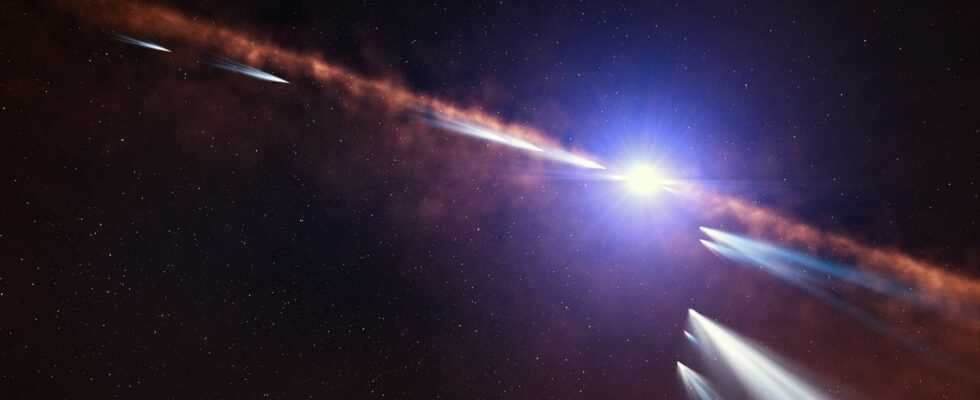Astronomers discovered 30 comets in one fell swoop in the Beta Pictoris star system, around 63 light-years from Earth. The exocomets are said to be about the same size as the comets in our solar system – an indication that similar processes are at work in the formation of comets. This is what the team led by Alain Lecavelier des Etangs from the Sorbonne Université in Paris writes in the specialist magazine Science Reports.
The researchers used the TESS space telescope to hunt for comets. They analyzed data collected by TESS from Beta Pictoris between 2019 and 2021. They identified a total of 30 exocomets that had left their mark in the star’s light. Its brightness changes slightly when a comet with a dusty tail passes in front of it.
Based on these small obscurations, the researchers were able to deduce the size of the exocomets. The cores of the exocomets should therefore have a diameter of 3 to 14 kilometers. A similar size distribution can also be found in the comets in our solar system. And that would in turn lead to the conclusion, according to the research team, that all these celestial bodies were formed in a similar way – namely through collisions and the breakup of larger objects.
Beta Pictoris itself is comparatively young at around 20 million years as the second brightest star in the constellation Painter. The second brightest star in the constellation Painter is therefore still surrounded by a gas and dust disk containing at least two planets. What is extremely practical about this star system for astronomy is its geometry: as seen from Earth, it presents itself almost exactly sideways. This means that astronomers can easily observe objects that pass in front of this star, including comets. The celestial bodies reveal themselves by a trail of gas and dust which they develop as they approach their star and are thereby heated. Since the light of the star itself is changed in this way, researchers can indirectly infer the comets – although they themselves are not visible from Earth.
